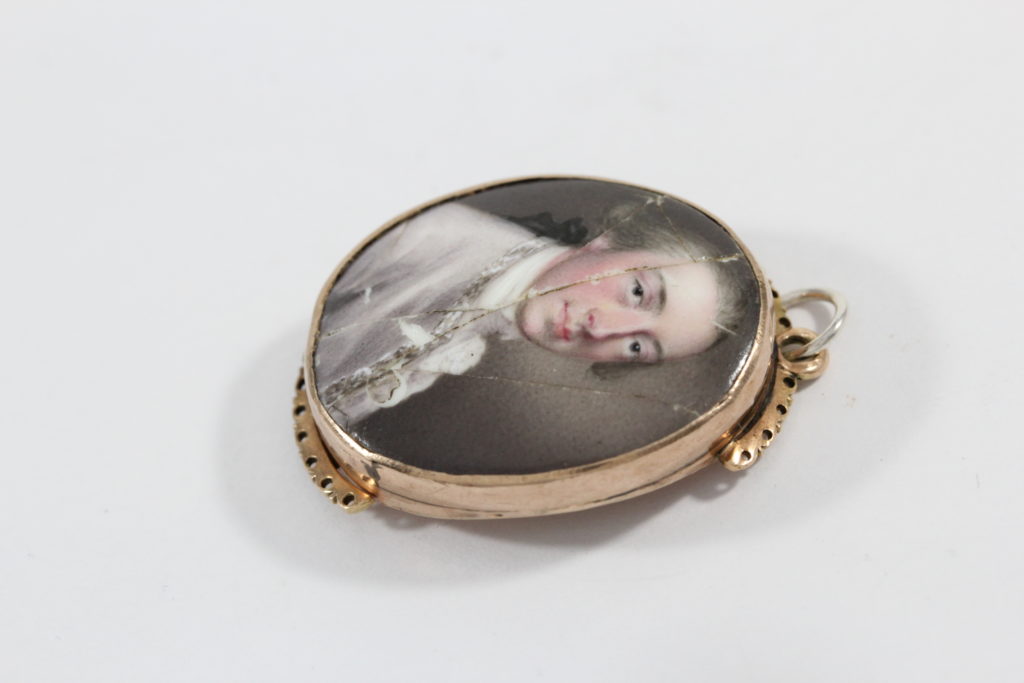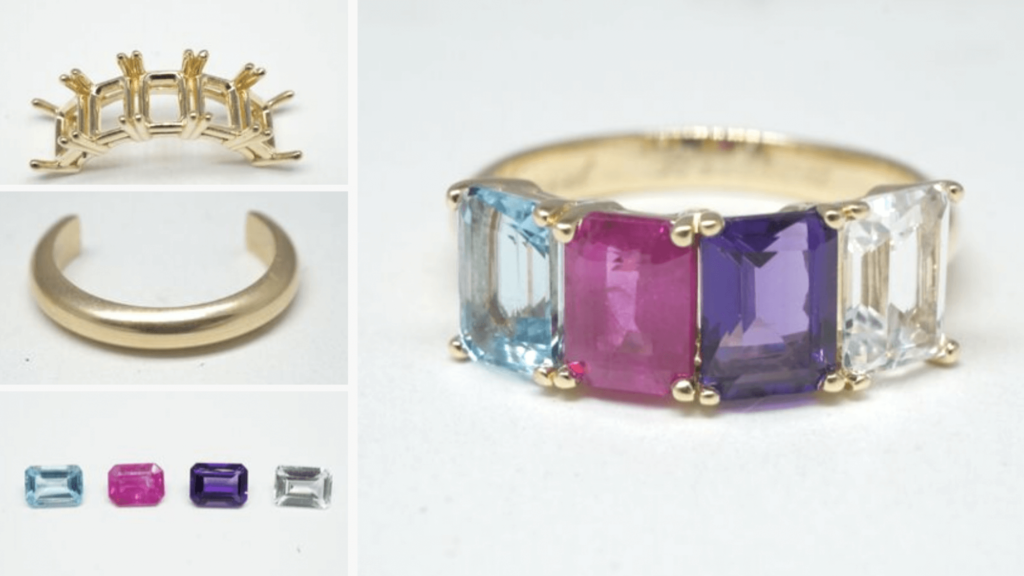A Complete Guide to Moissanite (From How To Say It to How To Buy It)
Written by Anna Currell
September 19, 2022
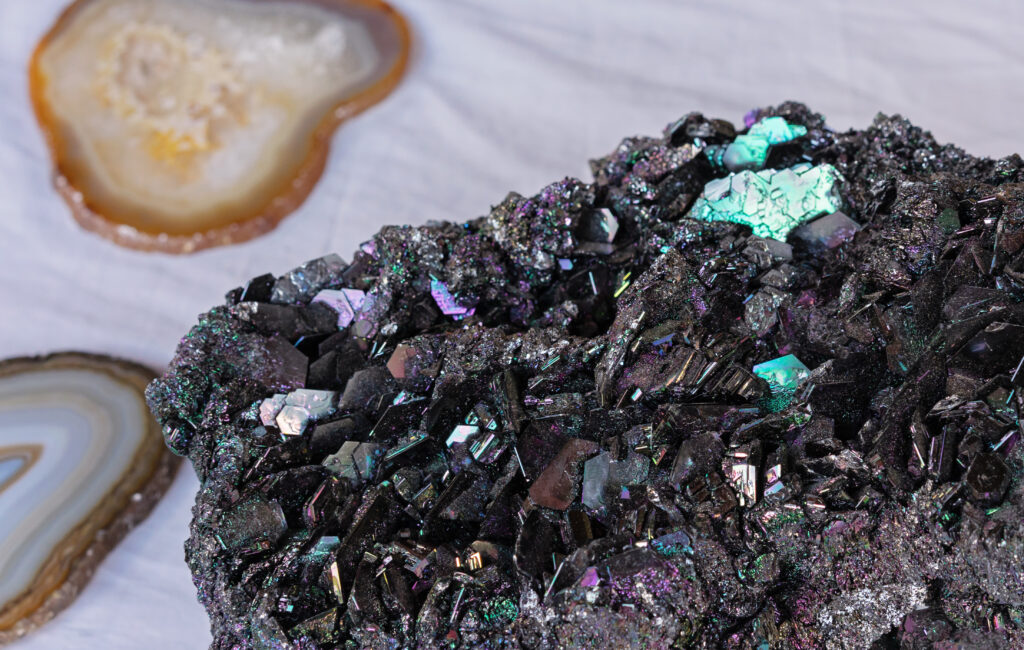
Moissanite: a strange word and a beautiful gem. Moissanite is becoming an increasingly popular gem, but since it looks so much like a diamond it’s often misunderstood as a “fake diamond.” That couldn’t be further from the truth; moissanite is an entirely unique and rare mineral substance in its own right. Considering a diamond alternative for your jewelry box? We’re here to help answer all your moissanite questions — even the ones you didn’t know to ask! Here’s your complete guide:
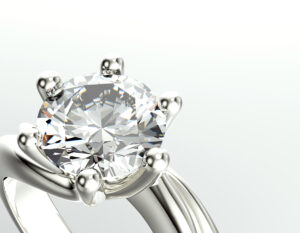
A moissanite ring
What Is Moissanite?
Moissanite is a naturally occurring silicon carbide mineral first discovered in 1893 by French chemist Henri Moissan (hence the name). Moissan first came across it while examining rock samples taken from a meteor crater in Canyon Diablo, Arizona. He initially thought it was a diamond, but upon further study, he realized it had a different composition and that this mineral was a new discovery.
Moissanite is an incredibly rare mineral; until the late 1950s, people thought it originated from meteorites because it was found in a meteor crater. However, decades after the initial discovery, more moissanite was found in the Green River Formation in Wyoming and then in a diamond mine in Yakutia, in the far east of Russia, which confirmed that moissanite grows naturally on earth.
All moissanite used for jewelry today is manufactured rather than mined. Scientists use heat and pressure to combine silicon and carbon to mimic the exact structure of naturally occurring moissanite. Just like lab-grown diamonds, the only real difference between naturally occurring moissanite and manufactured moissanite is their growth process — the chemical composition remains the same.
Moissanite’s appearance is often colorless, though it can have very slight yellow or green hues. If you’re still not sure how to pronounce the name of this gem, think “moist-and-night” without so many consonants and an emphasis on the first syllable: mois-an-ite.
Moissanite vs. Diamonds
Diamonds and moissanite look very similar, but there are a few categories where moissanite and diamond properties differ significantly. If you’re choosing between the two, take the following factors into consideration:
Price
Perhaps the most notable difference between diamonds and moissanite is their price point. Moissanite can cost 2 to 4 times less than diamonds. Diamonds are more expensive given their long-engrained tradition in weddings and engagements; the romantic notion to having a “real” diamond is reflected in the price tag. Because moissanite is less rare than diamonds and is more frequently manufactured instead of mined, moissanite jewelry is usually less expensive.
Brilliance
Brilliance is a technical term for the shine and sparkle that a gem emits; the composition of a mineral determines the way that light refracts off its surface. Although moissanite costs less than diamonds, that doesn’t mean that it is necessarily duller; in fact, moissanite has a brighter brilliance (making it appear shinier and sparklier) than diamonds because it refracts more light.
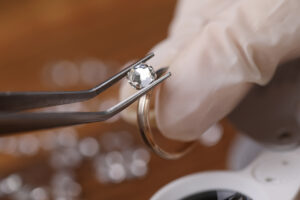
Chemical Composition
Diamonds are made of pure carbon, while moissanite is a silicon carbide compound. This means their chemical structures are different, but their shared carbon elements are what give them such a similar appearance (compared to a sapphire or ruby which are different forms of aluminum oxide, for example).
Hardness
The Mohs scale is a way to comparatively measure the hardness of a mineral. Since different gems can vary greatly in their hardness, some are better suited for jewelry. Most people will want a harder gem to ensure durability, especially with jewelry that comes into contact with all kinds of things during the course of a day, like rings. Moissanite has a Mohs rating of 9-9.5, whereas diamonds have a hardness rating of 10, the highest possible rank.
Moissanite vs. Cubic Zirconia
Cubic zirconia is similar to moissanite in a few ways. It’s a rare, naturally occurring mineral that can also be created in a lab, and it is a popular diamond alternative because it shares some of diamonds’ physical properties but is much less expensive.
Where moissanite is a 9-9.5 on the Mohs scale, cubic zirconia is an 8.5, making it slightly less durable for jewelry. Moissanite more closely resembles diamonds since both minerals contain carbon, whereas cubic zirconia is made of zirconium oxide. Cubic zirconia is much cheaper than moissanite — in fact, cubic zirconia often doesn’t have much resale value at all. Where a similar sized moissanite stone could go for around $500, a cubic zirconia stone could go for $30.
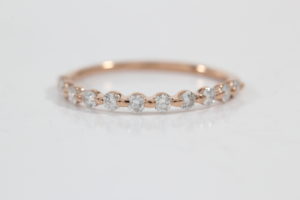
A small rose gold and cubic zirconia stacking ring
Pros and Cons to Buying Moissanite Jewelry
Now that you know the origin of this mineral and its difference from diamonds, what are the pros and cons of buying a moissanite gem?
Pros:
- It’s less expensive than its alternatives: If you’re trying to save money, especially if you’re shopping for an engagement ring with an upcoming wedding, a moissanite ring is a great option as it costs significantly less than a diamond.
- It shines brighter: If you like sparkle, you’ve found the right stone! The way moissanite refracts light creates an irresistible, glamorous, brilliant shine.
- It’s ethically manufactured: You won’t have to worry about unethical mining or any labor law violations with a moissanite ring. Lab-grown gems are inherently created with less conflict.
- It’s flawless: We’re not being hyperbolic; since moissanite is manufactured in a controlled environment instead of growing naturally, there are no blemishes in its structure. A moissanite ring is literally flawless!
Cons:
- It’s not a “real diamond”: If you love the romantic tradition that comes with a real diamond, then moissanite might not be the right fit for you. A lab-grown moissanite stone is less rare, whereas naturally occurring diamonds are harder to find.
- It has a lower resale value than most diamonds: If you spend less on the stone, then the resale value will naturally be lower as well. Getting an appraisal is a great way to determine what that value will look like.
How to Buy Moissanite
What type of ring are you looking for? Just like diamond rings, moissanite rings come in all kinds of shapes, sizes, and settings. Start by researching your options, looking at different types, and thinking about what suits your own style.
Since it’s becoming more popular, you can find moissanite in most places where gems and diamonds are sold. If you’re especially after that extra sparkle, try visiting a brick-and-mortar store where you can see the stone in person to be sure it has the shine you’re hoping for.
Whether you’d like to replace diamond with moissanite or custom create your own moissanite piece, Quick Jewelry Repairs can help! Get in touch today to learn more about finding and designing your own moissanite jewelry.
